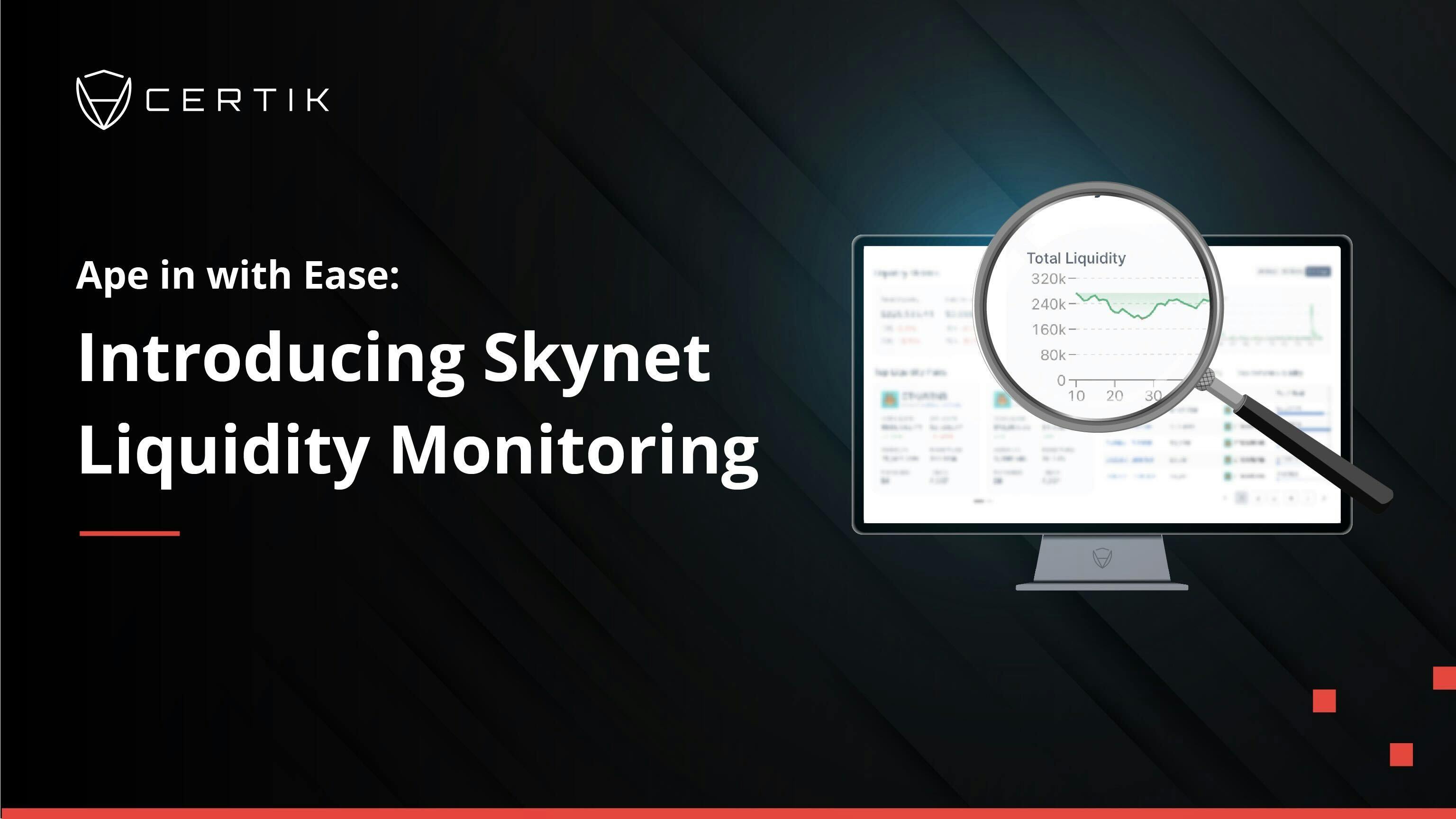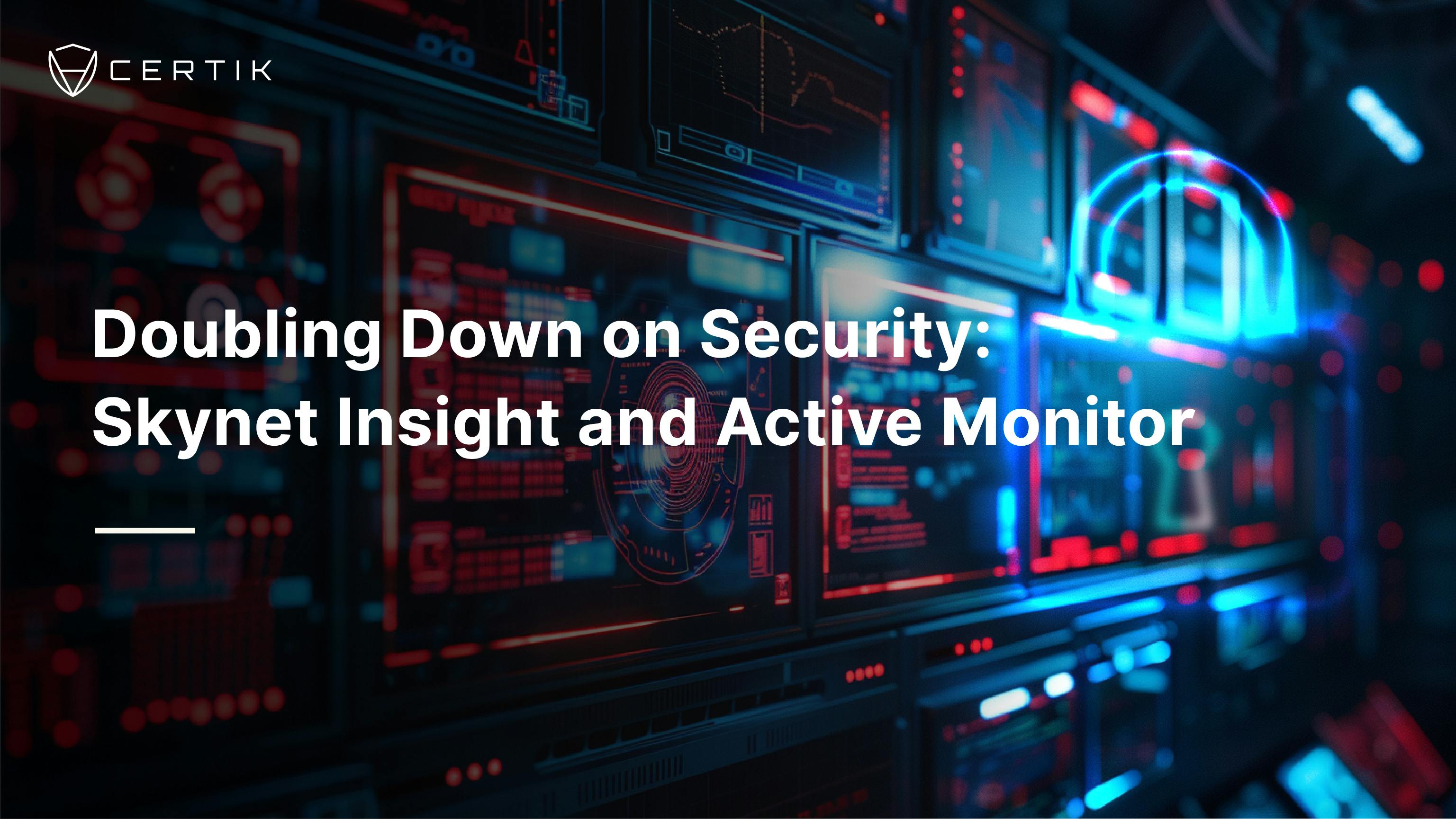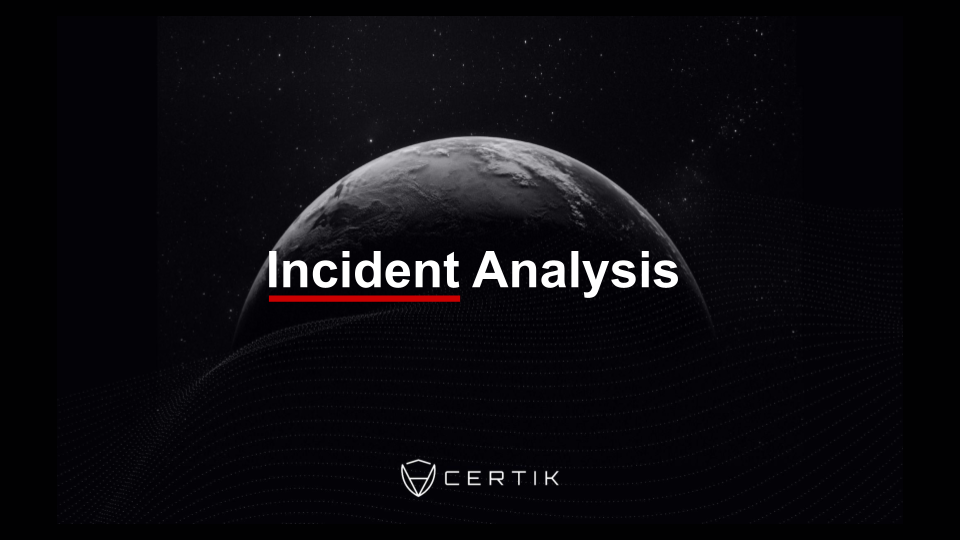Have you ever tried to ape into a small cap token only to find that Liquidity Provider (LP) fees are incredibly high and you can’t source the liquidity you need? Wouldn’t it be great if you could track liquidity over time? How about seeing how concentrated liquidity providers are? And what about managing your risk based on the liquidity of your positions?

Well now you can do all this and much more with Skynet Liquidity Monitoring!
When you visit a Skynet enabled project under www.certik.com you’ll now be able to scroll down and see Liquidity Monitoring right on the Skynet page. Liquidity Monitoring tracks top Decentralized Exchanges (DEX’s) including Uniswap, SushiSwap, and PancakeSwap.
Decentralized exchanges are a unique offering in the crypto space. DEXs use what are called Liquidity Pools to enable the peer to peer exchange of funds without a centralized market maker. Liquidity Providers (LPs) stake token pairs (for example SHIB/WETH) to the Liquidity Pool. Those who use the DEX pay a fee to the LP for the right to use their staked liquidity. This differs from centralized exchanges where you are trading directly with a counterparty in the traditional order book format.
To use a decentralized exchange you first need an L1 token. This can be ETH, BNB, SOL, DOT, and others. You’ll also need a wallet that is able to connect to a DEX. Metamask is a popular option. From here you will need to choose an exchange. A few DEXs are listed up top, you’ll need to see where the token you’re looking for is listed. Now you will swap your L1 token for whatever you’re buying. You’ll pay fees to the liquidity provider for this exchange. If you trade your ETH for SHIB, the liquidity provider will take the other side of the trade and end up with more ETH and less SHIB.. They are taking the risk of losing out on the value of the token you’ve chosen to swap into.In return for this risk, they earn the LP fee. This fee differs depending on the protocol. Uniswap’s fee, for example, is 0.3%. This is split among all LPs according to their share of liquidity in the pool.
Ok, let's now take a peek at what the Liquidity Monitoring section looks like on CertiK.com. Lets use SHIB as a project example:
Scrolling down to the bottom of the project page, you should see the above chart and metrics. But what does this all mean? Let’s explain the metrics and charts in more detail:
Liquidity Metrics:
View total liquidity, daily volume, 24 hour, and 7 day change. We pull this from multiple decentralized exchanges in order to deliver you the best data possible.
Liquidity Charts:
View total liquidity over time, choose from 30, 60, or 90 day charts. Track changes and watching for any indicators can help you make the best decision for your portfolio.
Top Liquidity Pairs:
Track the most liquid pairs for your coin of choice. Do you want to know if you’d be better served starting with a stable coin or a Layer 1 token? Check total liquidity, 24 hour volume, and see real time updates.
The metrics, charts, and pairs will help you make an informed decision as to when, where, and which pairs you should exchange.
Top LP Holders:
This is a very important metric. You will see different wallet addresses, the value of their liquidity, and what percentage of the total liquidity in the pool that represents. When one person controls a significant portion of the liquidity it can give them significant control over your ability to swap. Should they choose to remove their entire stake, it will be much more difficult to swap in large quantities. In order to mitigate this, some projects choose to take a portion of the total tokens and lock them in a liquidity contract. This guarantees some level of liquidity moving forward.
Top Add Liquidity:
This feature allows you to see which addresses added the most liquidity, and when they did it. Knowing how recently liquidity was added may aid you in your decision making.
Top Remove Liquidity:
Similar to the top add liquidity feature, this will tell you which addresses have removed the most liquidity and when. Knowing when liquidity was removed may help indicate if there will be liquidity moving forward.
Trading on decentralized exchanges can be a daunting experience at times. The Liquidity Monitoring section of Skynet can help you make informed decisions and navigate the DeFi space more securely. Take advantage of Liquidity Monitoring by enabling Skynet today.


